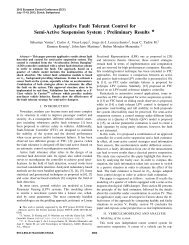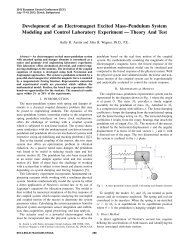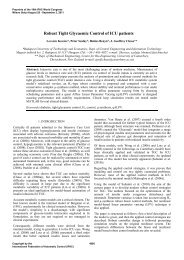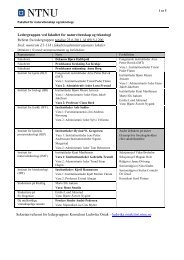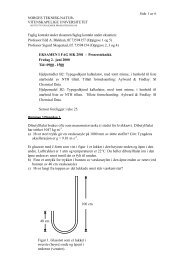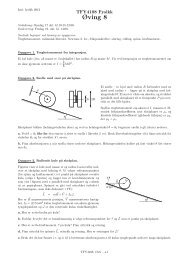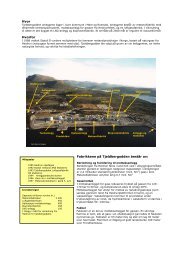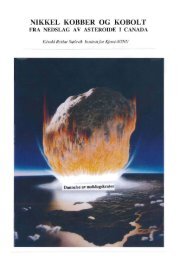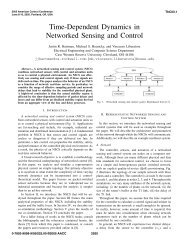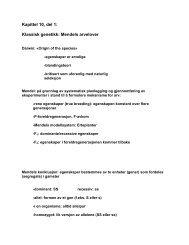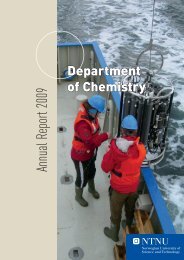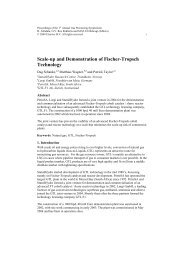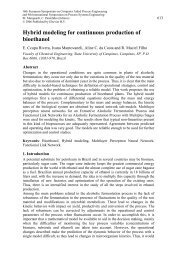CPC VI -- Chemical Process Control VI
CPC VI -- Chemical Process Control VI
CPC VI -- Chemical Process Control VI
You also want an ePaper? Increase the reach of your titles
YUMPU automatically turns print PDFs into web optimized ePapers that Google loves.
Nonlinear Model Reduction for Optimization Based <strong>Control</strong> of Transient <strong>Chemical</strong> <strong>Process</strong>es 13<br />
implementation in an optimization based operation support<br />
system. Since these models must cover the whole<br />
operational envelope of a plant, purely empirical process<br />
models seem to be unfavorable due to the immense effort<br />
required for plant testing (Pearson and Ogunnaike,<br />
1997). Consequently, models for optimization and control<br />
should capture the major physico-chemical effects in<br />
a mechanistic manner at least to the extent accessible.<br />
The more a-priori-knowledge can be built into a fundamental<br />
process model the less experimental effort will be<br />
required to fit the model to plant data in order to obtain<br />
good extrapolation capabilities in a large region of the<br />
state space.<br />
Modeling is considered one of the major bottlenecks of<br />
nonlinear model predictive control (Henson, 1998; Lee,<br />
2000) or, more generally, of optimization based process<br />
operations and control in the sense of Backx et al. (1998)<br />
and Helbig et al. (2000a). Lee (2000) discusses the requirements,<br />
the current status and the needs of nonlinear<br />
modeling and identification for control and operations<br />
with an emphasis on experimental identification.<br />
This paper aims at complementing and partly detailing<br />
Lee’s assessment by focusing on nonlinear model reduction<br />
for the implementation of optimization based operations<br />
support systems.<br />
A comprehensive and sensible review of this subject<br />
is a formidable task which can hardly be achieved given<br />
the limited space available. Hence, the selection of the<br />
material presented reflects at least to some extent the<br />
interest and the ignorance of the author. The references<br />
given should be taken as exemplary rather than as comprehensive.<br />
They have been chosen to point the interested<br />
reader to relevant approaches and results and to<br />
provide a first guide to a more detailed literature study.<br />
Modeling always has to be oriented towards a projected<br />
use in an application (Foss et al., 1998). Hence,<br />
the next section introduces first a mathematical formulation<br />
of the optimization based operation support problem,<br />
suggests some decomposition strategies and derives<br />
general requirements the models have to fulfill. The major<br />
phases of a systematic work process for the development<br />
of (fundamental) process models are given in the<br />
following section. The resulting models show a natural<br />
structure which should be exploited in model application.<br />
This structure can be related to hybrid modeling<br />
which is discussed in the following section.<br />
Fundamental models are typically of a high computational<br />
complexity which is difficult to handle by online<br />
optimization algorithms (Henson, 1998). Therefore,<br />
nonlinear model reduction techniques are of significant<br />
relevance if large-scale applications have to be tackled.<br />
Consequently, model reduction techniques are discussed<br />
in great detail next. We consider both, model order reduction<br />
to reduce the number of equations, and model<br />
simplification to reduce the complexity of the dynamic<br />
process model. With the final section, we return to the<br />
optimization based operation support system and discuss<br />
which type of models are good candidates for implementing<br />
the different modules in a potentially decomposed<br />
system. We conclude with a summary of important open<br />
research problems.<br />
Optimization Based Operation Support<br />
We introduce a general problem formulation for optimization<br />
based operation support and discuss potential<br />
decomposition strategies for implementing such a control<br />
system in an industrial environment (see Backx et al.<br />
(1998), Helbig et al. (2000b) and Backx et al. (2000) for<br />
a more detailed discussion). Resulting requirements on<br />
the models are summarized to guide fundamental modeling<br />
and model order reduction and simplification.<br />
Mathematical Problem Formulation<br />
The goal of optimal process control and operations is the<br />
minimization of some economic cost function Φi over a<br />
certain time horizon ∆i = [t0,i, tf,i], both set by a decision<br />
maker on a higher level in the automation hierarchy<br />
(e.g. a planner or a scheduler), in face of unknown<br />
parametric or unstructured model uncertainty and timevarying<br />
exogenous inputs represented by the disturbance<br />
vector di(t). The minimization is subject to the model<br />
equations f(·) and to production and process constraints<br />
mi(·) and g i(·) such as product quality and capacity<br />
restrictions or equipment limitations. The constraints<br />
mi(·), g i(·) can be either path, point or periodicity constraints.<br />
The final time tf,i of the operational phase ∆i<br />
is determined by the operational objectives. It could,<br />
for example, be the final batch time or the time after<br />
which a grade change in a continuous process has been<br />
completed. Feedback of available measurements η i(t) of<br />
the system outputs y i(t), inputs ui(t) and disturbances<br />
di(t) is introduced to achieve satisfactory performance.<br />
Typically, an estimation of the states xi(t) and the disturbances<br />
di(t) is required to implement output feedback<br />
with high performance. We drop the index i denoting a<br />
specific operational phase subsequently to ease notation<br />
in the sequel.<br />
The overall output feedback problem can be separated<br />
into a dynamic data and model reconciliation problem<br />
and into an optimal control problem. At any time instance<br />
tc ∈ ∆, the reconciliation problem<br />
subject to<br />
min Φr(yr, η, xr,0, dr, tr, tc) (1)<br />
xr,0,dr<br />
0 = f r( ˙xr, xr, ur, dr) ,<br />
xr(tr) = xr,0 ,<br />
y r = hr(xr, ur, dr) ,<br />
ur = U[uc(·)] ,<br />
0 ≥ g r(xr, ur, dr) ,



